The Oppo Find X3 Pro is the brand’s top-end flagship for 2021, built to compete with the best high-end devices, and with a price that positions it in the ultra-premium segment. Phone features include a 6.7-inch AMOLED QHD+ display with 120 Hz refresh rate, a Qualcomm Snapdragon 888 chipset with 12 GB RAM and 256 GB of storage, and fast 65W SuperVOOC charging.
As you’d expect, this ultra-premium device comes equipped with plenty of cameras, too. There’s a quad-cam on the rear, including a 50 MP standard-wide main camera, a 50 MP ultra-wide, a 13 MP tele-lens module for 5x “hybrid optical zoom” shots, and a 3 MP microscope camera (not covered by our test protocol).
For video, the Find X3 Pro shoots 4K footage at both 60/30 fps with video stabilization, boasts a video zoom feature at the 4K 30 fps setting, and you can drop the resolution for super slo-mo effects at 1080p/240 fps or 720p/480 fps.
Let’s find out how Oppo’s 2021 flagship shapes up for smartphone photography as we break down the scores and compare image samples across all the attributes we test.
Key camera specifications:
- Primary: 50 MP 1/1.56″ Sony IMX 766 sensor, f/1.8-aperture lens, PDAF and OIS
- Ultra-wide: 50 MP 1/1.56″ Sony IMX 766 sensor, f/2.2-aperture lens with 110.3° field of view and PDAF
- Tele: 13 MP sensor, f/2.4-aperture lens
- Microscope: 3 MP sensor, 60x magnification, FHD video, f/3.0-aperture lens
- LED flash
- Ambient light & flicker detection system
- Video: 2160p/60 fps, 1080p/240 fps, 720p/480 fps, video zoom
About DXOMARK Camera tests: For scoring and analysis in our smartphone camera reviews, DXOMARK engineers capture and evaluate over 3000 test images and more than 2.5 hours of video both in controlled lab environments and in natural indoor and outdoor scenes, using the camera’s default settings. This article is designed to highlight the most important results of our testing. For more information about the DXOMARK Camera test protocol, click here. More details on how we score smartphone cameras are available here.
Test summary
Scoring
Sub-scores and attributes included in the calculations of the global score.
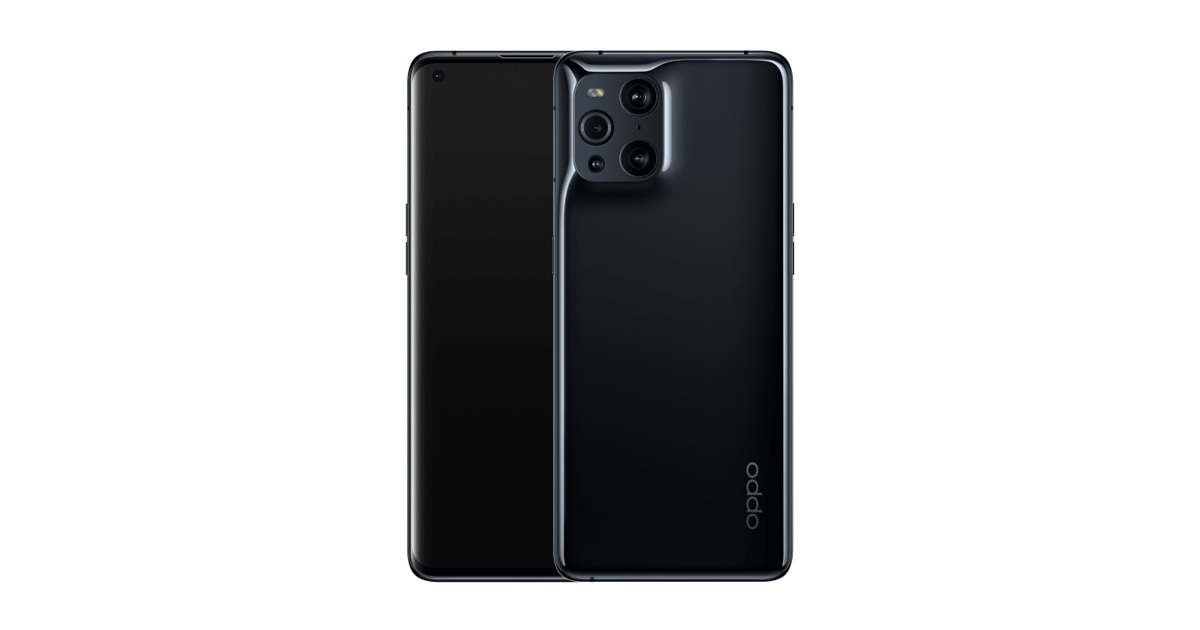
Oppo Find X3 Pro


Use cases & Conditions
Use case scores indicate the product performance in specific situations. They are not included in the overall score calculations.
Outdoor
Photos & videos shot in bright light conditions (≥1000 lux)
Indoor
Photos & videos shot in good lighting conditions (≥100lux)
Lowlight
Photos & videos shot in low lighting conditions (<100 lux)
Friends & Family
Portrait and group photo & videos
 81st
81st 61st
61stPros
- Vivid and pleasant color in most photos and videos
- Good detail in all photos and videos
- Reliable preview image
- Good texture and noise compromise in ultra-wide photos
- Accurate depth estimation in bokeh photos
- Extended dynamic range in night photos
- Fast and smooth video autofocus
- Mostly effective video stabilization
Cons
- Photo exposure instabilities in high-contrast scenes
- Video exposure adaptation instabilities
- Underexposed low-light videos
- Slow autofocus in low-light photos
- White balance errors in low-light photos and videos
- Luminance noise often visible in photos
- Strong noise in low-light videos
Securing an excellent overall score of 131, the Oppo Find X3 Pro eases effortlessly into the upper echelons of our smartphone photography rankings. It scores a point better than the Apple iPhone 12 Pro Max at 130, and matches the score achieved by the slightly more affordable Vivo X50 Pro+. A little daylight remains between Oppo’s latest flagship and our current top two devices, the Xiaomi Mi 11 Ultra at 143 and the Huawei Mate 40 Pro+ at 139, with some key differences among the devices in our analysis. Nevertheless, the Oppo Find X3 Pro remains one of the best devices we’ve had the pleasure of testing.
Oppo’s 2021 ultra-premium handset does very well in the Photo category, where its score of 139 currently ranks 4th. By and large it posts excellent scores across the range of Photo test attributes, with particularly strong results for color, autofocus, texture, bokeh, and artifacts. So photographers can expect vivid and pleasant color, good detail retention, and accurate target exposures from the primary camera in almost all lighting conditions.
It’s not infallible, with occasional exposure instabilities resulting in blown highlights in bright light, or clipped shadows in low light. But even so, dynamic range remains good and correct exposure on faces in tricky lighting conditions is an additional plus point.
Some mild noise is usually visible in photos, including in outdoor HDR scenes and in lower light conditions, but signal interference is generally managed well compared to other devices. In very low light, autofocus isn’t quite as snappy as we’d like and white balance occasionally misses the mark, but those quibbles aside, Photo image quality is very high.
The device also fares well in the specialty areas of bokeh and night photography. Bokeh mode was tested at 2x magnification. Overall results are good, with accurate subject segmentation and warm but pleasant color; and although some noise is visible, it’s uniformly distributed across the sharp and blurred areas.
The Find X3 Pro also does an impressive job on low-light cityscapes, where target exposures are accurate, with extended dynamic range, good color, and lots of detail. Autofocus can fail shooting night portraits, and some motion blur and unnatural skin tone rendering is evident when using flash, but on the whole its night photography credentials are good, especially on those cityscapes.
The Oppo Find X3 Pro achieves a good but not amazing score of 71 in our Zoom category, where we evaluate ultra-wide and tele-lens shots.
The ultra-wide module is the stronger performer, with outstanding texture and noise results when compared to many other ultra-premium devices. Exposure and color are as nice as we observed on the main camera, too. We measured the ultra-wide camera at a focal length of 15 mm, which is a useful range for landscape or architecture.
Where the Find X3 Pro lags behind the very best devices at the top of the leader board is for tele-lens shots. Its 5x hybrid optical zoom solution offers acceptable detail in both close- and medium-range zoom shots, but zoom HDR capabilities are limited and noise is often visible. Push the magnification a little harder to long-range and resolution is also fairly limited, resulting in a noticeable loss of detail compared to devices with a 120 mm-equivalent (5x optical) tele-lens like the Xiaomi Mi 10 Ultra.
With an excellent Video score of 111, the Oppo Find X3 Pro also maintains its position as a top-ranked device for moving images. The Find X3 Pro defaults to the ultra-wide module for video, but we tested it using the main camera at 4K/30fps resolution, which achieves the best compromise between stabilization, exposure, texture, and noise. You can 60fps select manually, which will help improve video quality in bright light, but the Find X3 Pro doesn’t offer an automatic variable frame rate like we saw on the Xiaomi Mi 11 Ultra. (This is a handy feature for achieving the best video quality across a range of lighting situations without any user intervention, and it would be nice to see Oppo incorporate it in the future.)
Video strengths include fast and accurate autofocus with smooth tracking and effective stabilization in most scenarios. There’s a little jello here and there, as well as a slight difference in frame sharpness in low light, but walking and handheld videos are generally stabilized well. Video details are generally nicely preserved and noise is well controlled outdoors, with a little temporal and localized interference evident when the light levels drop.
Video exposure is good, but some steps and instabilities during adaptation are visible; slight clipping occurs in bright light; and some videos in low light are underexposed, although low-light exposure improves when a face is detected. On the whole, video color is accurate and pleasant, too. Just watch out for instabilities in low light, where white balance adaptation can be slow and color casts can be visible.
Below you can find a detailed analysis and image samples for all Photo, Zoom, and Video sub-attributes, as well as comparisons with some of the Oppo Find X3 Pro’s key competitors, including the Huawei Mate 40 Pro+, the Apple iPhone 12 Pro Max, the Xiaomi Mi 10 Ultra, and the OnePlus 9 Pro.
Photo
The Oppo Find X3 Pro achieves a Photo score of 139. In this section, we take a closer look at each sub-attribute and compare image quality against competitors.

Exposure and Contrast
Oppo Find X3 Pro
92
111
In these tests we analyze target exposure, contrast, and dynamic range, including repeatability across a series of images. Tests are undertaken in a wide range of light conditions, including backlit scenes and low light down to 1 lux. The score is derived from a number of objective measurements in the lab and perceptual analysis of real-life images.
These samples show the Oppo Find X3 Pro’s exposure performance in a high-contrast outdoor scene compared to the competition.

Color
Oppo Find X3 Pro
103
107
In these tests we analyze color rendering, skin tones, white balance, and color shading, including repeatability across a series of images. The score is derived from a number of objective measurements in the lab and perceptual analysis of real-life images.
These samples show the Oppo Find X3 Pro’s color performance in outdoor lighting compared to the competition.

Autofocus
Oppo Find X3 Pro
104
109
In these tests we analyze autofocus accuracy and shooting time, including repeatability, in the lab. We test focus failures, depth of field, and tracking of moving subjects using perceptual analysis of real-life images.
This graph shows the Oppo Find X3 Pro’s autofocus performance while handholding the device in our lab analysis at a light level of 5 lux.

Texture
Oppo Find X3 Pro
108
111
In these tests we analyze texture on faces and objects, including objects in motion, in a range of light conditions, using several lab test setups and perceptual analysis of real-life images.
This graph shows the Oppo Find X3 Pro’s texture measurements compared to the competition.

Noise
Oppo Find X3 Pro
79
102
In these tests we analyze noise on faces and objects, including objects in motion, in a range of light conditions, using several lab test setups and perceptual analysis of real-life images.
These samples show the Oppo Find X3 Pro’s noise performance in an outdoor scene compared to the competition.

Bokeh
Oppo Find X3 Pro
70
80
For these tests we switch to the camera’s bokeh or portrait mode and analyze depth estimation, bokeh shape, blur gradient, and repeatability, as well as all other general image quality attributes mentioned above. The score is derived from perceptual analysis of real-life images.
These samples show the Oppo Find X3 Pro’s bokeh simulation under outdoor conditions compared to the competition.

Night
Oppo Find X3 Pro
60
82
In these tests we shoot a selection of images in pitch-black darkness as well as with city lights in the background providing some illumination. We shoot sample images with the camera at default settings in both flash-auto and flash-off modes. We analyze all image quality attributes but we pay particular attention to exposure, autofocus, and color. We do not test night modes that have to be activated manually.
These samples show the Oppo Find X3 Pro’s night performance in auto-flash mode compared to the competition.

Artifacts
Oppo Find X3 Pro
71
77
In these tests we check images for optical artifacts such as vignetting, flare, lens softness in the corner, distortion, and chromatic aberrations, as well as for processing artifacts such as ghosting and fusion errors, hue shift, and ringing.
This sample shows ringing artifacts on the Oppo Find X3 Pro.

Preview
Oppo Find X3 Pro
69
80
In these tests we analyze the image quality of the preview image and the differences between preview images and captured images, particularly in terms of exposure, dynamic range, and bokeh effect. We also check the smoothness of the field-of-view changes on the preview image when zooming with both buttons or when using the pinch-zoom gesture.
These samples show the Oppo Find X3 Pro’s preview performance under 1000 lux lighting in the lab.
Zoom
The Oppo Find X3 Pro achieves a Zoom score of 71. The Zoom score includes the tele and wide sub-scores. In this section, we take a closer look at how these sub-scores were achieved and compare zoom image quality against competitors.

Wide
Oppo Find X3 Pro
48
58
In these tests we analyze the performance of the ultra-wide camera at several focal lengths from 12 to 20 mm. We look at all image quality attributes, but we pay particular attention to such artifacts as chromatic aberrations, lens softness, and distortion.
These samples show the performance of the Oppo Find X3 Pro’s ultra-wide camera in daylight conditions compared to the competition.

Tele
Oppo Find X3 Pro
87
140
In these tests we analyze all image quality attributes at focal lengths from approximately 40 to 300 mm, paying particular attention to texture and detail. The score is derived from a number of objective measurements in the lab and perceptual analysis of real-life images.
These samples show the Oppo Find X3 Pro’s tele performance indoors using a medium-range zoom setting.
Video
The Oppo Find X3 Pro achieves a Video score of 111. A device’s overall Video score is derived from its performance and results across a range of attributes in the same way as the Photo score. In this section, we take a closer look at these sub-scores and compare video image quality against competitors.
We analyze the same image quality attributes in our Video tests as for still images, such as exposure, color, texture, and noise, but we also include such temporal aspects as speed, smoothness and stability of exposure, white balance, and autofocus transitions.
NOTE: The sample video clips in this section are best viewed at 4K resolution.

Exposure and Contrast
Oppo Find X3 Pro
85
118
This graph shows the Oppo Find X3 Pro’s video target exposure performance compared to the competition.

Color
Oppo Find X3 Pro
94
107
These video stills show the Oppo Find X3 Pro’s video color in outdoor lighting compared to the competition.

Autofocus
Oppo Find X3 Pro
105
109
These sample clips show the Oppo Find X3 Pro’s video autofocus performance in outdoor lighting compared to the competition.

Texture
Oppo Find X3 Pro
91
99
These video stills show the Oppo Find X3 Pro’s video texture under 300 lux lighting conditions in the lab compared to the competition.

Noise
Oppo Find X3 Pro
87
105
These video stills show the Oppo Find X3 Pro’s video noise performance in low light compared to the competition.

Artifacts
Oppo Find X3 Pro
82
85
For video artifacts, we check for the same kinds of artifacts mentioned in the Photo section, along with such video-specific artifacts as frame rate variation in different light conditions, judder effect, and moving artifacts (artifacts such as aliasing, color quantization, and flare can often be more intrusive when moving than in a still image).
This graph shows the advantage of an adaptive frame rate that automatically increases its fps in good lighting to improve image quality. The Find X3 Pro dropped points here due to the lower frame rate over 100 lux compared to devices like the Xiaomi Mi 10 Ultra. Of course you can select 60 fps manually, but it’s better if a device implements an effective algorithm that does it for you.

Stabilization
Oppo Find X3 Pro
101
103
In these tests we analyze residual motion when handholding the camera during recording, as well as when walking and running with the camera. We also look for stabilization artifacts such as jello effect, sharpness differences between frames, and frame shift (abrupt changes of framing).
These sample clips compare the Oppo Find X3 Pro’s video stabilization in outdoor conditions.


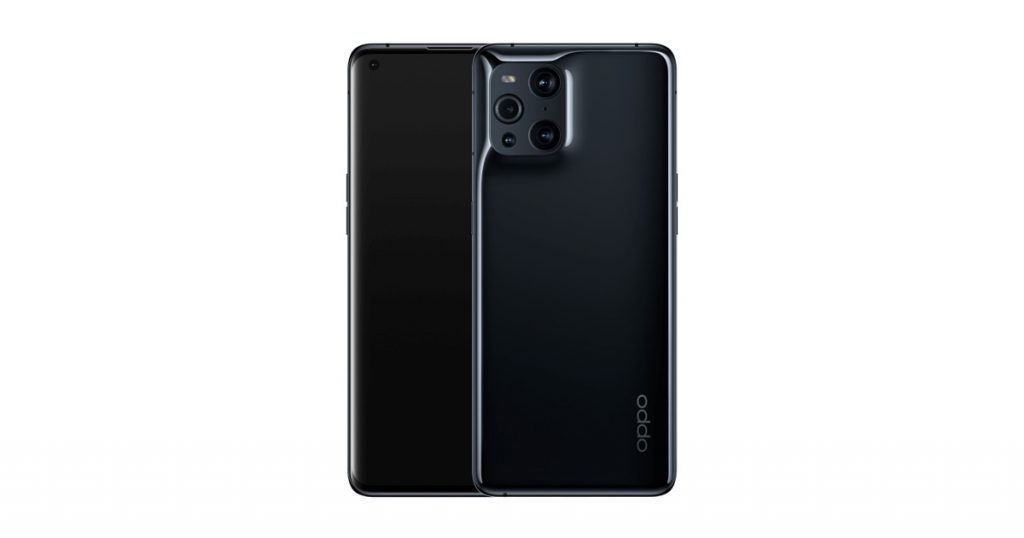


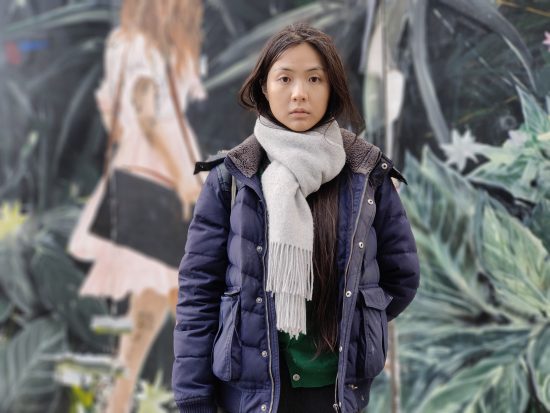

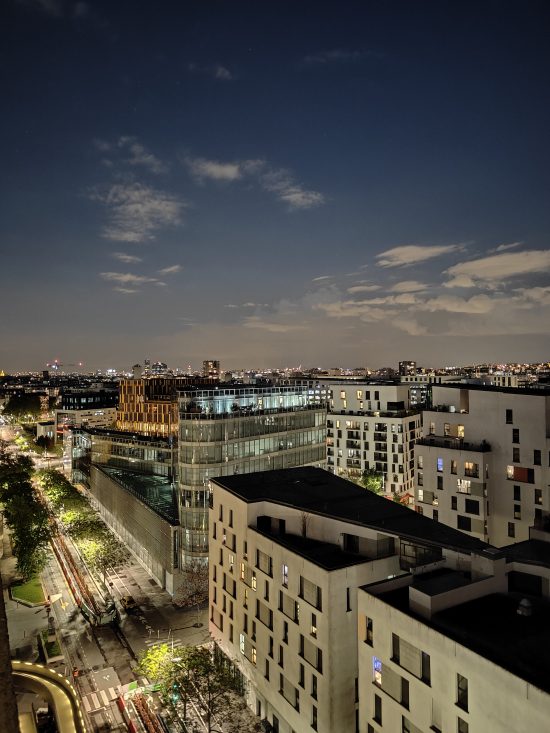

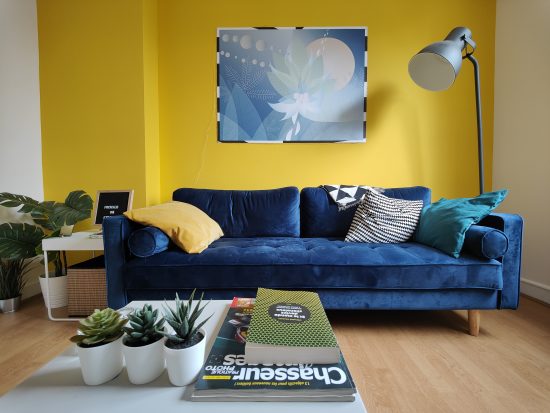
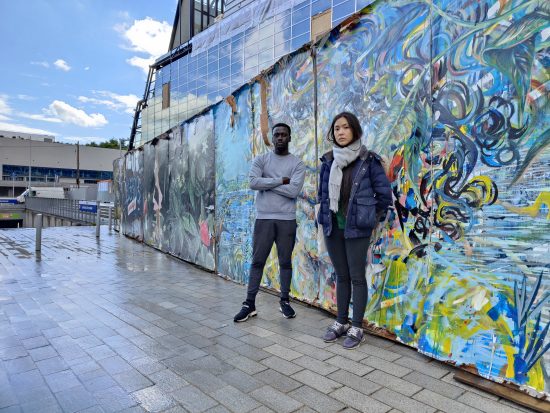
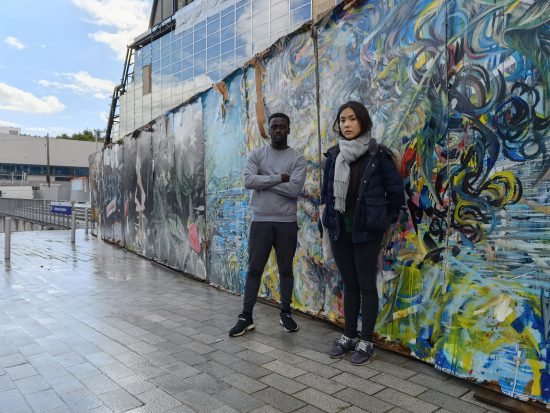
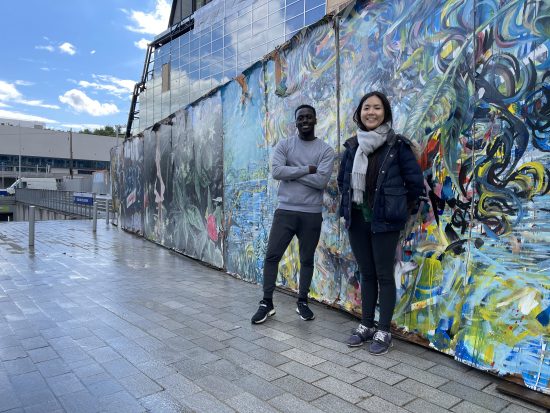



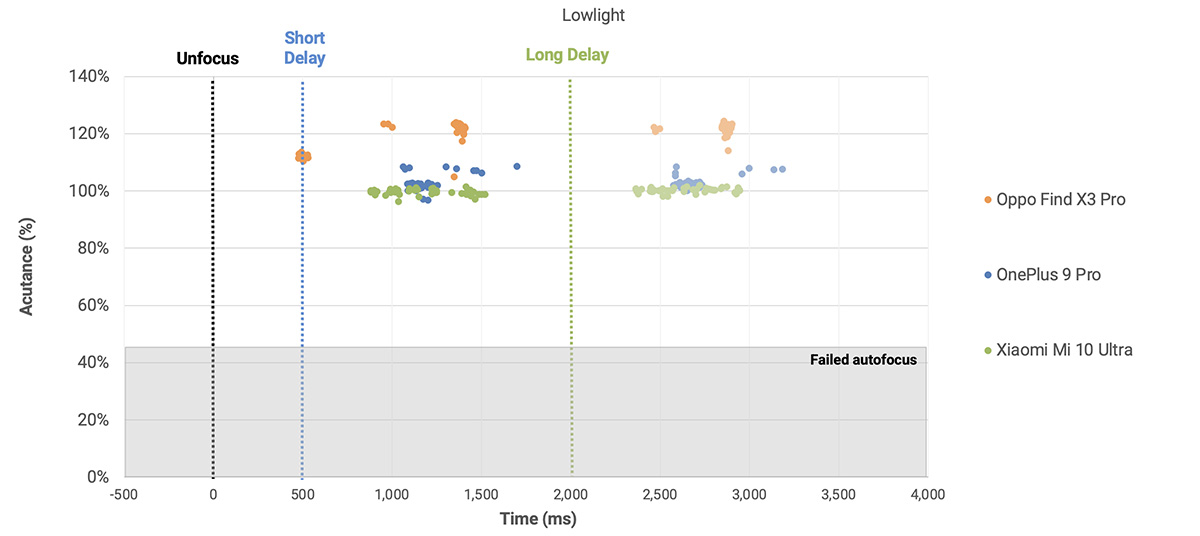
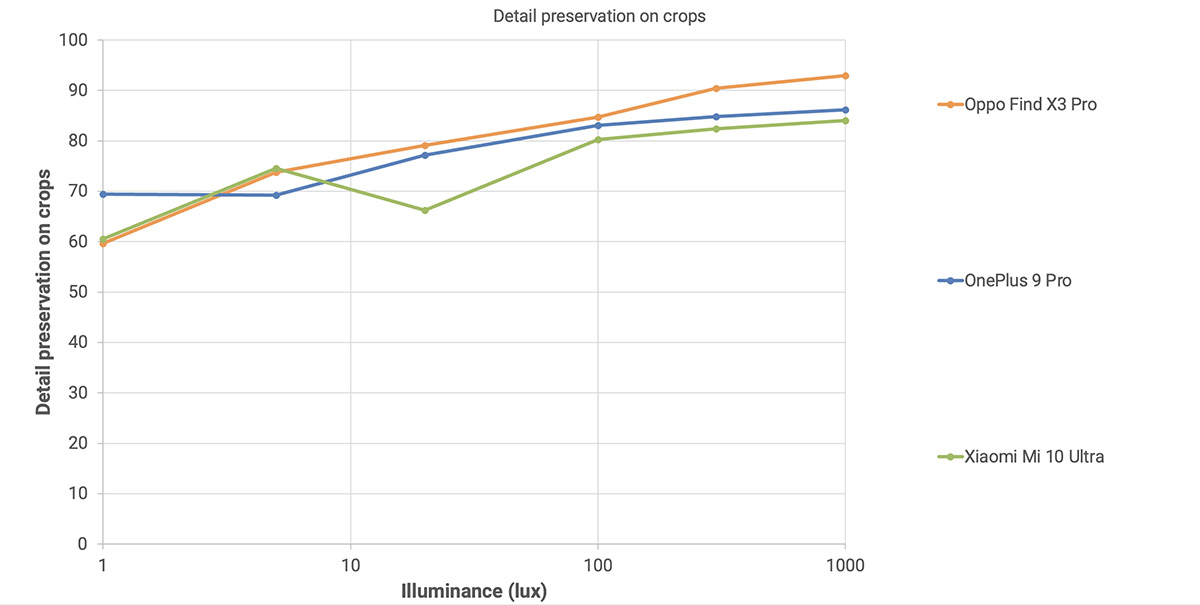
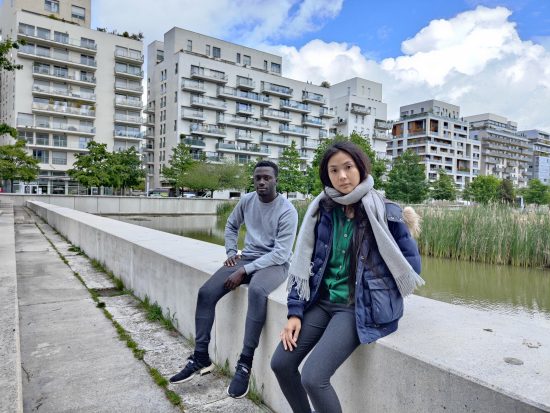

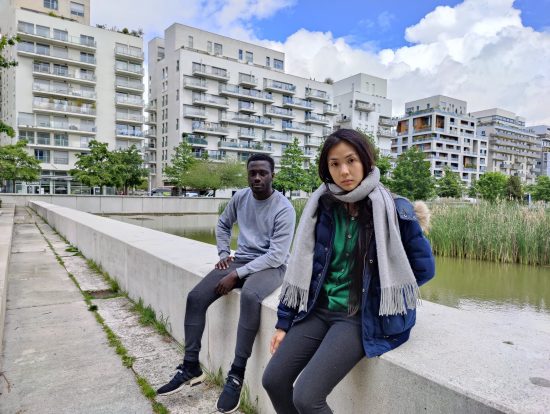






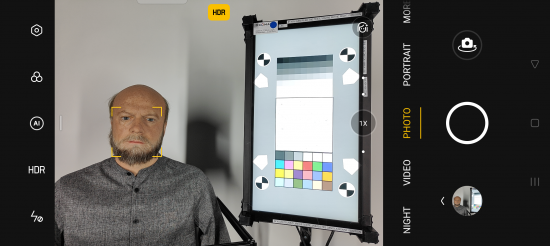
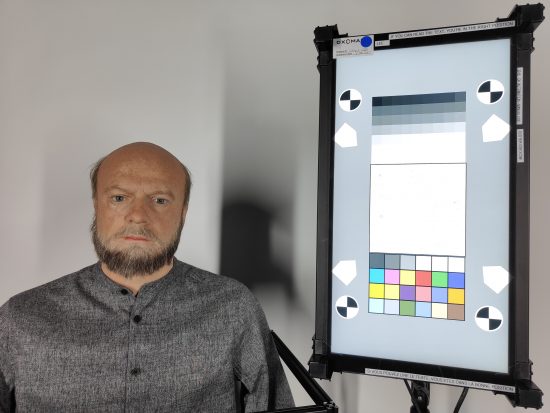


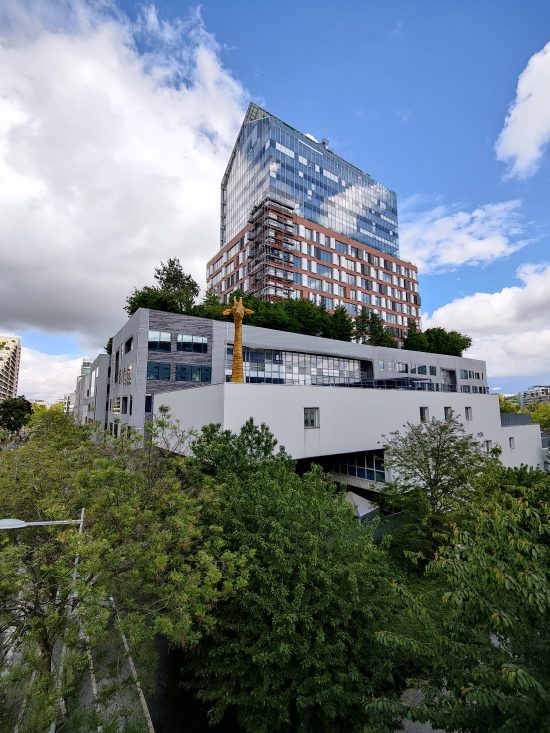
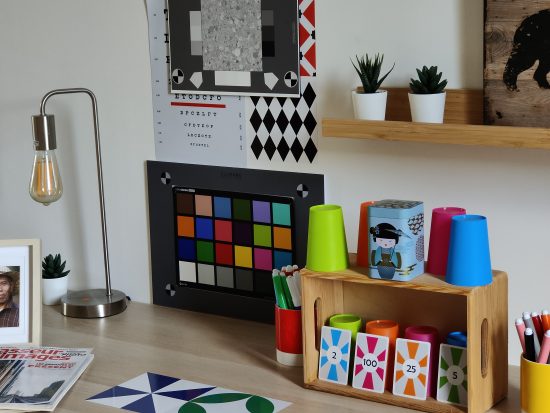
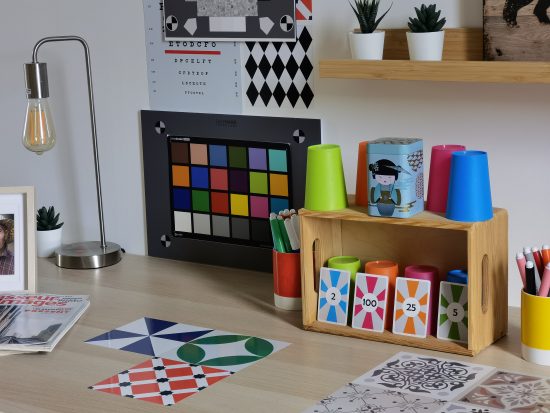
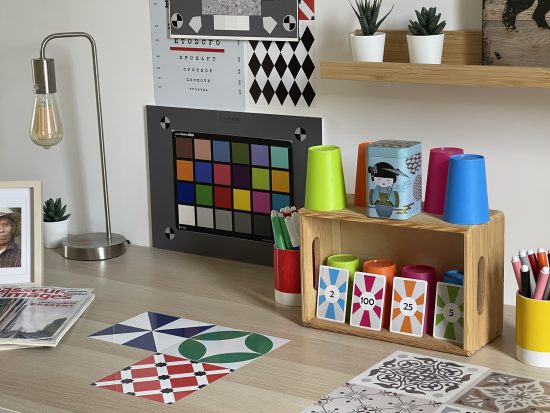
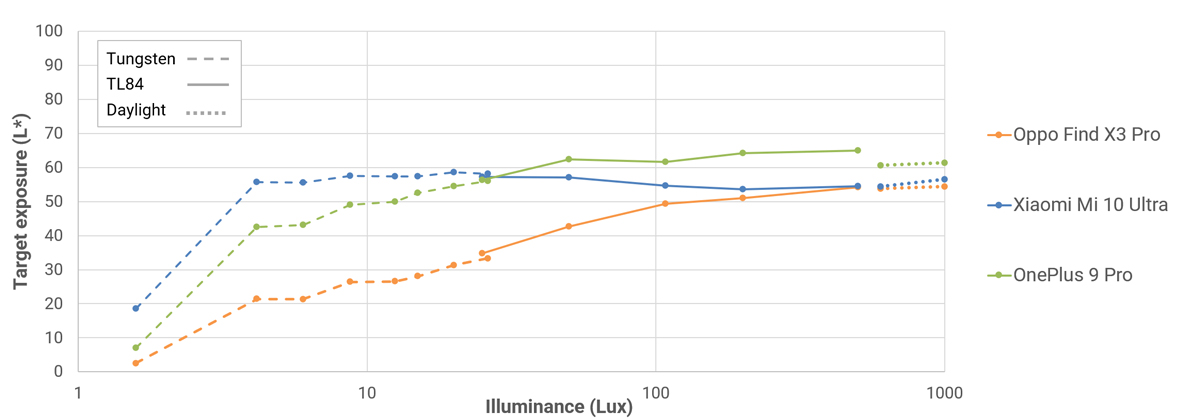



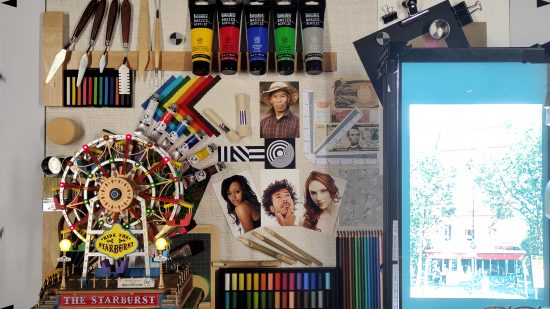
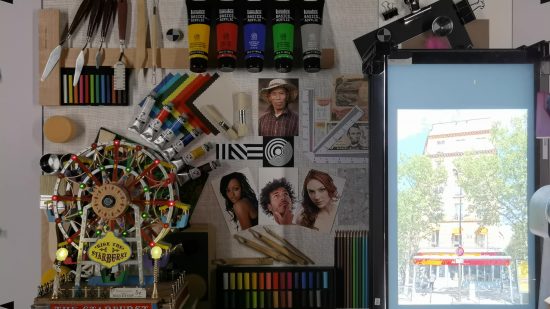
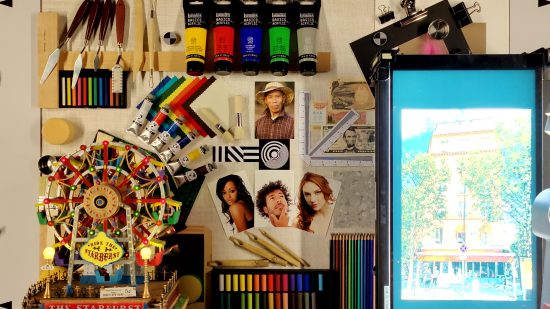
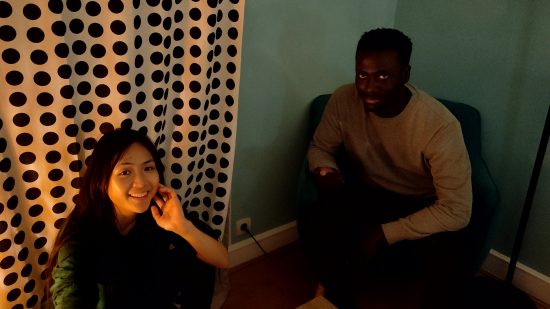
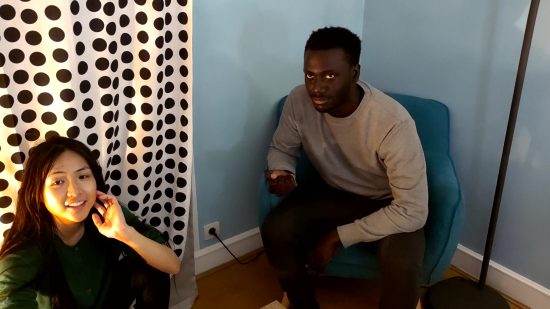
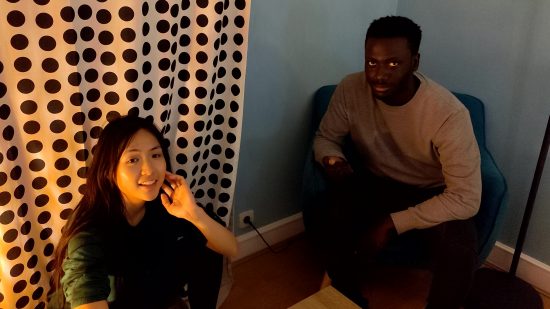
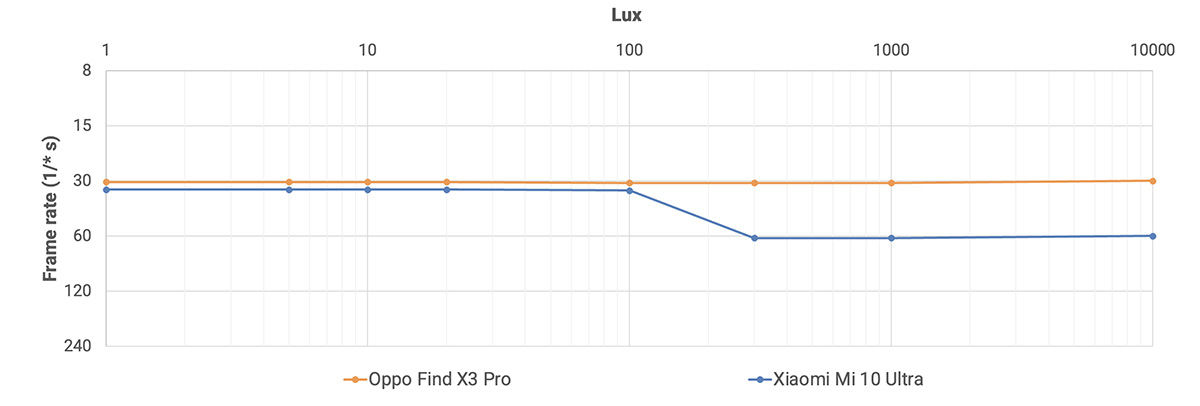


DXOMARK encourages its readers to share comments on the articles. To read or post comments, Disqus cookies are required. Change your Cookies Preferences and read more about our Comment Policy.